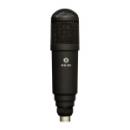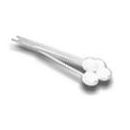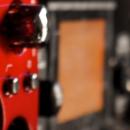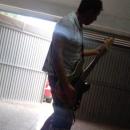a mi me gustan mis event 2020bas por eso mismo porque no tengo que subir tanto el volumen, me dan los graves que necesito a un volumen moderado.
¿Hay alguna regla sobre el volumen de las pistas en la mezcla?

OFERTAS Ver todas
-
-30%Behringer X32 Producer
-
-19%Behringer X-Touch Compact
-
-5%Kawai ES-60

Buenas noches.
Perdón por volver a levantar un hilo que llevaba tiempo parado, pero es que hace poco he empezado un libro nuevo y me he encontrado algo que inmediatamente me hizo recordar este hilo.
EL libro se llama "The Mixing Engineer´s Handbook", y está escrito por Bob Owsinsky. En él, el señor Owsinsky, aparte de dar sus puntos de vista, compila una serie de entrevistas a afamados técnicos de mezcla, y en ellas explican sus procedimientos.
En el capítulo "1.-Balance", página 17, establece como "Typical Mix Starting Places" (y por este orden) los siguientes instrumentos:
Bajo
Bombo
Caja
OH´s
Voz o instrumento principal
A continuación hay un apartado llamado "Level-Settig Methods" que dice:
Mixers have debated from the beginnig of mixing time about setting levels by using the VU meters. Some mixers feel that they can get in the ballpark by setting the levels with the meters alone, whereas others discount any such method out of hand. The fact of the matter is that for those using the meter method, feel and instinct are still a large part of their technique, making it equally as valid as those who rely on instinct alone.
As with everything that you read, try the following methods, use what works, and throw away the rest.
Benny Facone: I usually star with the bass at about -5 and the kick at about -5. The combination of the two, if it´s right, should hit about -3 or so. By the time the whole song gets put together and I´ve used the computer to adjust levels, I´ve trimmed everything back somewhat. The bass could be hitting -7 if I solo it after it´s all done.
Don Smith: I´ll star out with the kick and bass in that area (-7VU). By the time you put everything else, it´s +3 anyway. At least if you start that low, you have room to go.
Ed Seay: Usually a good place to start is the kick drum at -6 or -7 or so. I´ll try to get a bass level that is comparable to that. If it´s not exactly comparable on the meter because one´s peaking and one´s sustaining, I get them to at least sound comparable, because later in mastering, if you affect one, you´re going to affect the other. So as long as the ratio is pretty correct between the two, then if you go to adjust the kick, at least it´s not going to whack the bass way out as long as they relate together. That´s kind of a good starting place for me.
Lee DeCarlo: I´ll get the snare drum constantly hitting the backbeat of the tune at around -5, and everything gets built around it
Son sólo unos apuntes para quien quiera un punto de partida.
Un saludo.
Perdón por volver a levantar un hilo que llevaba tiempo parado, pero es que hace poco he empezado un libro nuevo y me he encontrado algo que inmediatamente me hizo recordar este hilo.
EL libro se llama "The Mixing Engineer´s Handbook", y está escrito por Bob Owsinsky. En él, el señor Owsinsky, aparte de dar sus puntos de vista, compila una serie de entrevistas a afamados técnicos de mezcla, y en ellas explican sus procedimientos.
En el capítulo "1.-Balance", página 17, establece como "Typical Mix Starting Places" (y por este orden) los siguientes instrumentos:
Bajo
Bombo
Caja
OH´s
Voz o instrumento principal
A continuación hay un apartado llamado "Level-Settig Methods" que dice:
Mixers have debated from the beginnig of mixing time about setting levels by using the VU meters. Some mixers feel that they can get in the ballpark by setting the levels with the meters alone, whereas others discount any such method out of hand. The fact of the matter is that for those using the meter method, feel and instinct are still a large part of their technique, making it equally as valid as those who rely on instinct alone.
As with everything that you read, try the following methods, use what works, and throw away the rest.
Benny Facone: I usually star with the bass at about -5 and the kick at about -5. The combination of the two, if it´s right, should hit about -3 or so. By the time the whole song gets put together and I´ve used the computer to adjust levels, I´ve trimmed everything back somewhat. The bass could be hitting -7 if I solo it after it´s all done.
Don Smith: I´ll star out with the kick and bass in that area (-7VU). By the time you put everything else, it´s +3 anyway. At least if you start that low, you have room to go.
Ed Seay: Usually a good place to start is the kick drum at -6 or -7 or so. I´ll try to get a bass level that is comparable to that. If it´s not exactly comparable on the meter because one´s peaking and one´s sustaining, I get them to at least sound comparable, because later in mastering, if you affect one, you´re going to affect the other. So as long as the ratio is pretty correct between the two, then if you go to adjust the kick, at least it´s not going to whack the bass way out as long as they relate together. That´s kind of a good starting place for me.
Lee DeCarlo: I´ll get the snare drum constantly hitting the backbeat of the tune at around -5, and everything gets built around it
Son sólo unos apuntes para quien quiera un punto de partida.
Un saludo.


Buenas tardes.
Yo lo compré aquí, pero me temo que no hay edición en español:
http://www.amazon.com/Mixing-Engineers- ... 07&sr=8-1#
Un saludo.
Yo lo compré aquí, pero me temo que no hay edición en español:
http://www.amazon.com/Mixing-Engineers- ... 07&sr=8-1#
Un saludo.

Para los que estáis empezando a enfrentaros a una mezcla, en esta revista hay un buen resumen:
http://www.revistaimprescindibles.com/suplemento/como-afrontar-una-mezcla-musical
http://www.revistaimprescindibles.com/suplemento/como-afrontar-una-mezcla-musical




Les cuento lo que a mi me ha resultado para entregar trabajos profesionales.
Durante la mezcla, trata que tus pistas estén entre -5 Y -7 DB en el fader de cada pista, incluso menos, evita grabar pistas muy cerca de los 0 DB
En esos rangos escucha la canción, que se sienta bien, que tu sientas que los instrumentos están proporcionados y como a ti te gusta, que la voz se entienda perfectamente, etc.
Teniendo cada pista con su fader indicidual entre - 5 y - 7, NO DEBERIA generar picos tan grandes o problemáticos
Para mantener una referencia de volumen, mantén el fader master en - 1 DB, o bien en 0 DB.
Si vas a enviar la mezcla a masterizar o tu mismo masterizas, maneja esos niveles, - 5, -7, por cada pista y el fader master en 0 o -1 DB
Saludos, y si me equivoco por favor corregirme.
Durante la mezcla, trata que tus pistas estén entre -5 Y -7 DB en el fader de cada pista, incluso menos, evita grabar pistas muy cerca de los 0 DB
En esos rangos escucha la canción, que se sienta bien, que tu sientas que los instrumentos están proporcionados y como a ti te gusta, que la voz se entienda perfectamente, etc.
Teniendo cada pista con su fader indicidual entre - 5 y - 7, NO DEBERIA generar picos tan grandes o problemáticos
Para mantener una referencia de volumen, mantén el fader master en - 1 DB, o bien en 0 DB.
Si vas a enviar la mezcla a masterizar o tu mismo masterizas, maneja esos niveles, - 5, -7, por cada pista y el fader master en 0 o -1 DB
Saludos, y si me equivoco por favor corregirme.

Hola Ariel!
Lo que comentas es incorrecto.
Los niveles individuales de las pistas no deben seguir un patrón concreto. Todo es variable, en eso consiste la "mezcla". Es más, es variable hasta en el tiempo, por eso se suele automatizar.
En el master no debe alcanzar el cero y un trabajo que se entrega para masterizar debe estar por debajo de los niveles que has recomendado.
Salut!
Lo que comentas es incorrecto.
Los niveles individuales de las pistas no deben seguir un patrón concreto. Todo es variable, en eso consiste la "mezcla". Es más, es variable hasta en el tiempo, por eso se suele automatizar.
En el master no debe alcanzar el cero y un trabajo que se entrega para masterizar debe estar por debajo de los niveles que has recomendado.
Salut!

Pep Navarro Casanova escribió:En el master no debe alcanzar el cero y un trabajo que se entrega para masterizar debe estar por debajo de los niveles que has recomendado.
Si trabajamos en coma flotante (ya sea con 32 ó 64 bits) tampoco es requisito indispensable entregar la mezcla por debajo de X nivel de pico. Incluso pudiera estar por encima de 0 en algún momento puntual. El ingeniero de mastering podrá atenuar la mezcla si lo estima oportuno.
Un saludo.




Empieza por el control de ganancia (gain control). Si tu DAW no tiene, existen plug-ins. Los faders deben permancer en la "unity gain" (0 dB) hasta el último momento. Yo situo todos los niveles entre -7 y -10 dB, lo que me da margen para posteriores procesos.Después hay que "limpiar" el "low end" de cada pista, usando HPF. Luego se panoramiza, teniendo en cuenta que a mayor "lateralización" de un instrumento mayor pérdida en dB en la reproducción en mono (hasta llegar a los 3 dB en el extremo). Por tanto, los instrumentos de mayor peso han de permanecer en el centro. Las pistas principales dependen del gusto personal y del estilo del tema musical: en rock se suele dar prioridad a bateria (espeicalmente kick ) i bajo, mientras que en pop a la pista de lead vocal. Comprobar que pistas son inestables y en qué sentido, y si necesitan phase correction, EQ, compresión, etc, o se pueden dejar tal cual (no siempre hay que aplicar plug-ins a todo, hay instrumentos que suenan bien por sí mismos). Para compensar la lateralización y conseguir la compatibilitat estéreo/mono se panoramiza por oposición, colocando un instrumento de "peso" equivalente a cada lado (esto no tiene nada que ver con la estereofonía, es simplemente, a efectos de mercado, compatibilizar con el sistema monofónico). El estéreo no tiene reglas; la panoramización es libre y puede ser todo lo desequilibrada que se quiera, si el resultad es el deseado.Después de aplicar todos los procesos, efectos de envío, etc es cuando hay que manipular sutilmente los faders y dejar la mezla lista para masterizar.
Hilos similares
Nuevo post
Regístrate o identifícate para poder postear en este hilo



